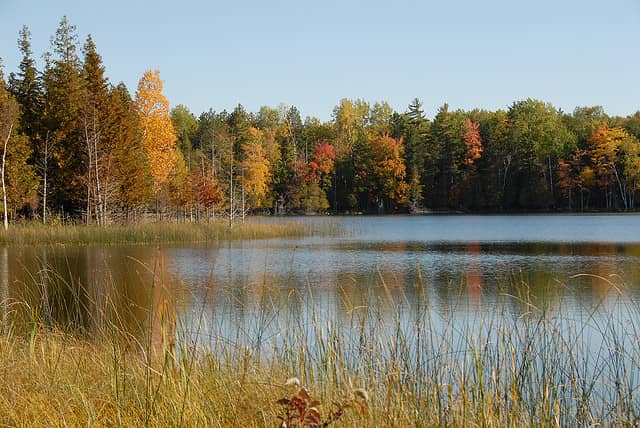Tactics for Fall Bass Fishing
Mike Iaconelli 09.13.11

It’s that time when anglers need to be thinking about shifting tactics from summer to fall seasonal patterns.
If you live in the north, early stages of fall patterns may already be developing. In the south, it may not occur until October. In either case, it’s triggered by the first successive nights of cool weather, cooling water temperatures and shorter days.
Those changes send the lake’s forage toward shallower water and the bass follow them. The gamefish know winter is coming and they have to eat as much as they can before it arrives.
Where to look: Bait and bass often head back to the same places you found them in early spring, but they don’t go there overnight. During the transition, look for them moving along lake contours that lead from summer hideouts to the shallower feeding areas. On natural lakes, they may follow a drop-off separating big flats and deeper water while on reservoirs it will be channels and ditches leading into creeks.
I’m always looking for signs of baitfish. If I don’t see them dimpling the surface, I’ll idle through a creek and study my Lowrance StructureScan for large pods of suspended bait. If there’s no sign of minnows, the bass won’t be there, either.
Here’s another clue: backwater areas receiving freshwater run-off tend to attract more fish than those without feeder creeks and ditches. Fresh flowing water brings deliver tiny organisms that minnows eat and that’s what draws the bait and the bass.
Lure choices: I employ a one-two punch when fishing in the fall, opting for either “search” baits or finesse lures.
Search baits (crankbaits, jerkbaits, and spinnerbaits) allow me to cover water quickly. Finesse lures (Carolina rig, shaky head worm, drop-shot rig or grub) come into play once I locate a school or if they stop biting the search bait.
Fall bass are aggressive and eager to chase down a fast mover, so search baits work very well. However, fall often brings cold fronts that send bass into a snit. The finesse lure works best when there’s been an abrupt weather change and the bass aren’t attacking a fast mover.
My lure colors and sizes are chosen to match the dominate forage in the area.
I’ll start with deep runners Rapala DT-10 or DT-14 crankbaits in early fall as I work my way from the front to the back of a creek. As the water shallows in the back, I will switch to Husky Jerk (jerkbait), Molix double willow spinnerbait, a DT-6 crankbait or Rattlin’ Rap lipless crankbait.
When I catch a fish, I kick a marker buoy into the water to mark the spot. Fall bass roam in wolf packs so it’s critical to work that area thoroughly.
Late fall: When water temps drop into the 50s, the bass know to head back to the main lake for winter. They will follow the same routes they took when they moved into the shallower areas but will set up on harder structures, such as logs, brush piles, stumps and gravel on those same contours. If working a crankbait and you feel it, bump something solid lying on the bottom, work that area from several angles.
And remember – early fall may produce the best numbers of bass, but big bass feed heavily into the late fall, even when cold weather sits in. When other anglers have given up for the season, you can be enjoying some of the best fishing of the year!
Photo: Jim Sorbie

